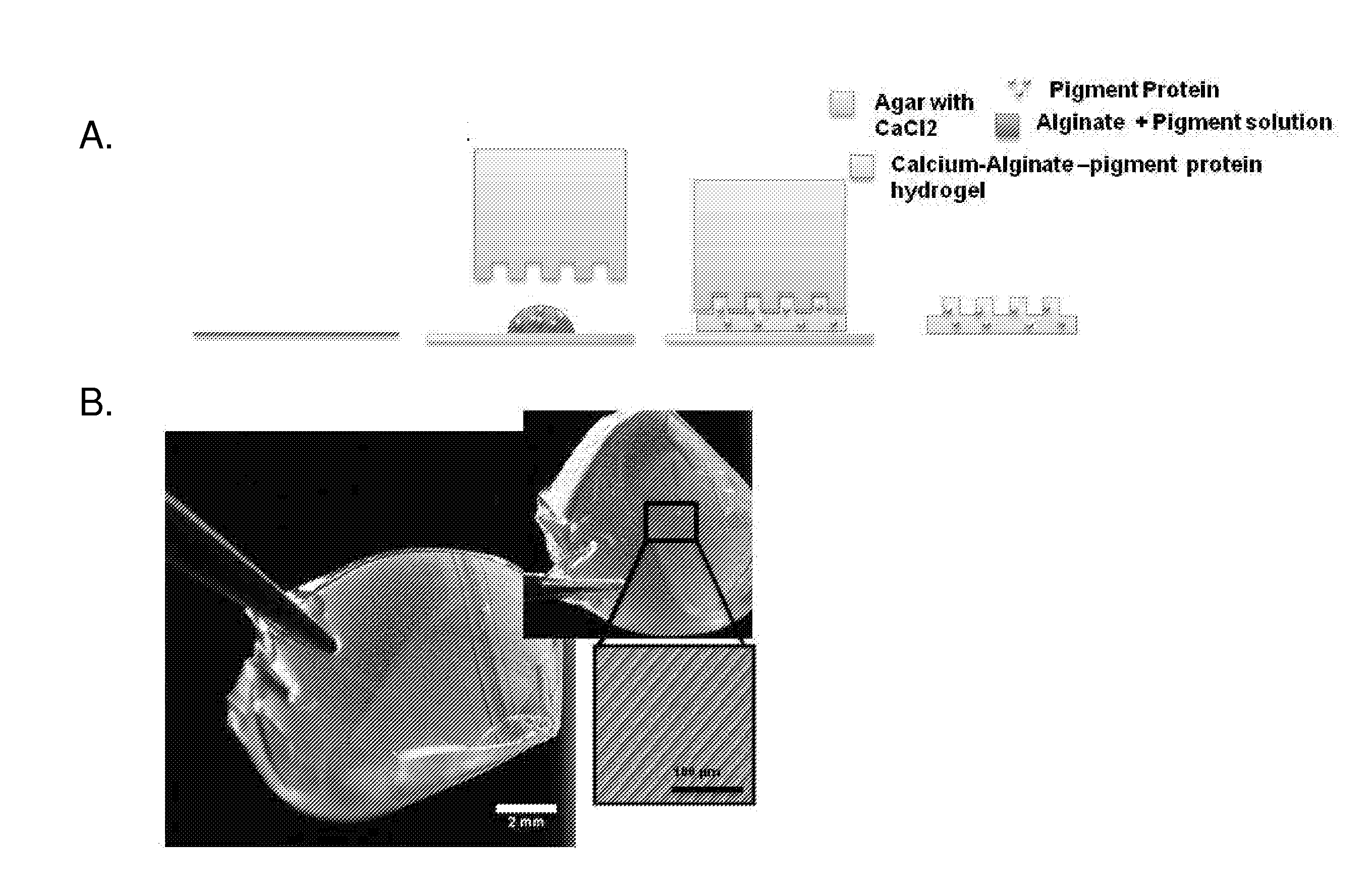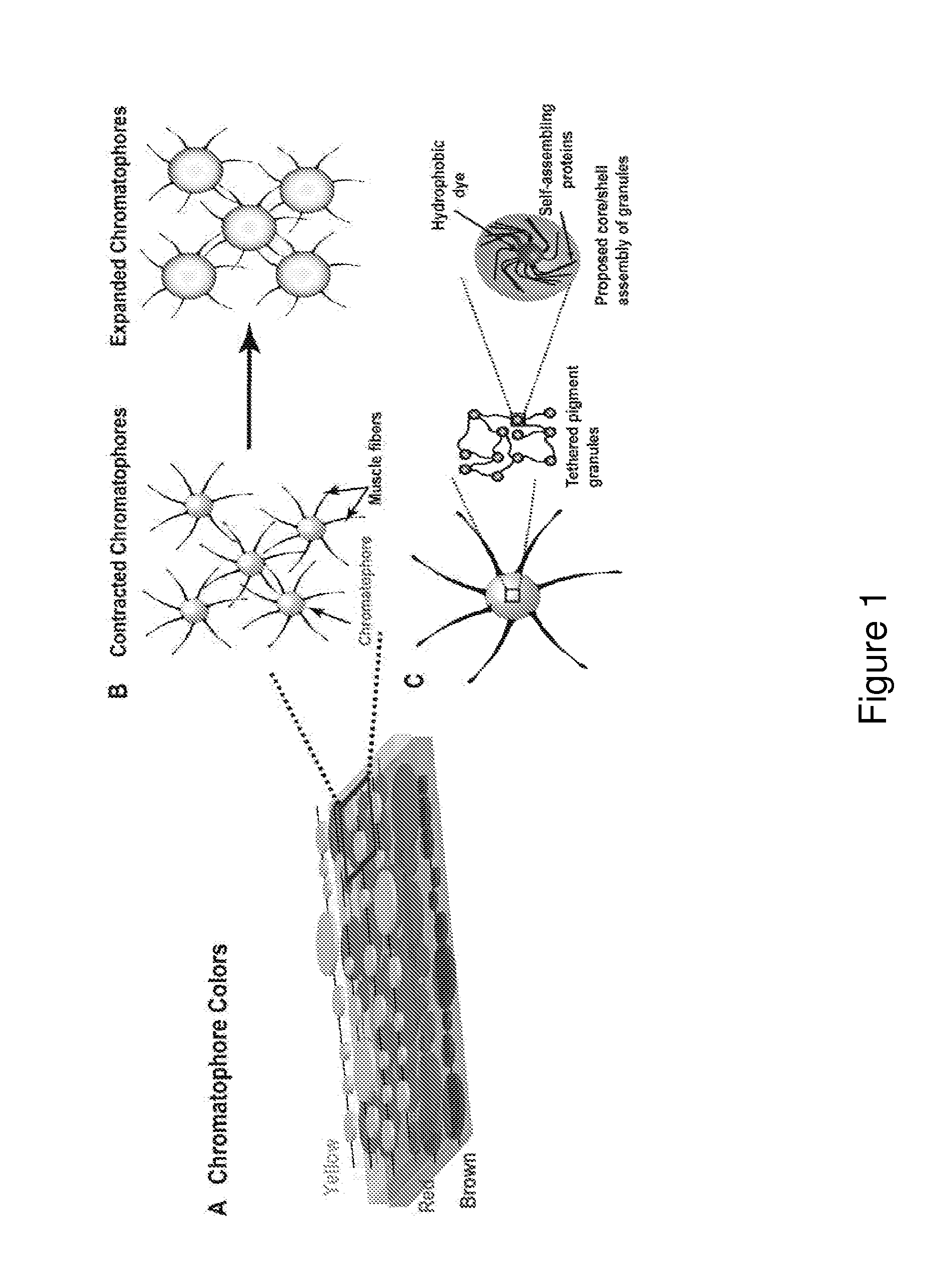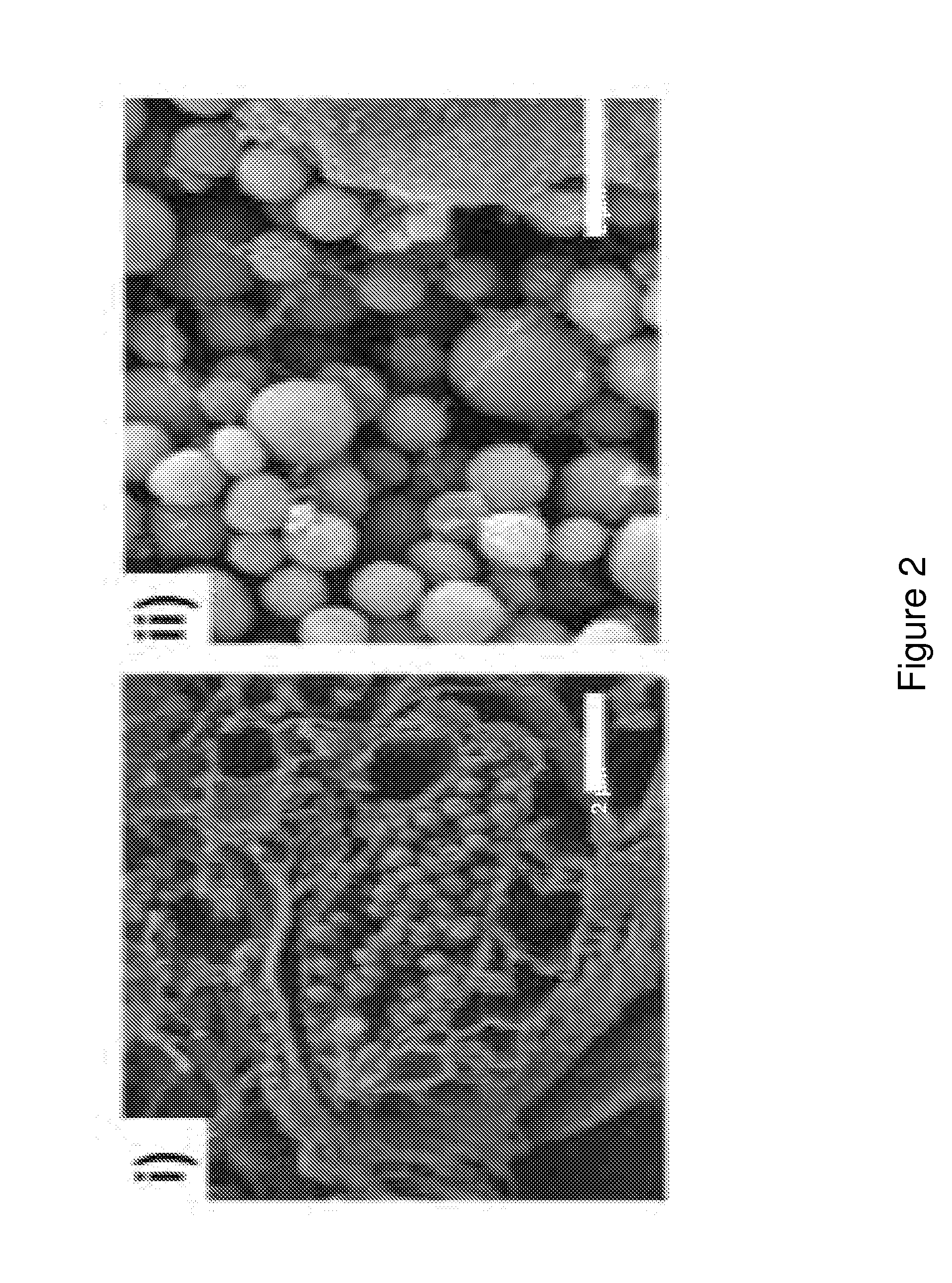Pigment structures, pigment granules, pigment proteins, and uses thereof
a technology of pigment proteins and structures, applied in the direction of peptide/protein ingredients, biocides, peptides, etc., can solve the problems of limited flexibility, high cost, and limited flexibility of semiconductors or metal oxides, and achieve the effect of stable and optically activ
- Summary
- Abstract
- Description
- Claims
- Application Information
AI Technical Summary
Benefits of technology
Problems solved by technology
Method used
Image
Examples
example 1
Sepia officinalis Pigment Granules and Pigment Proteins
[0130]Nature has evolved unique mechanisms to rapidly change the color of an organism for communication and defense. For example, cuttlefish, Sepia officinalis, have evolved a highly effective mechanism of adaptive coloration with a millisecond response time (Mathger, L. M., et al. (2009) Journal of the Royal Society Interface 6, S149-S163; Mathger, L. M., Roberts, et al. (2010) Biology Letters 6, 600-603). This process relies on the cooperative assembly of three optical components within its dermal tissue (Mathger, L. M., et a. (2009) Journal of the Royal Society Interface 6, S149-S163; Cloney, R. A. & Brocco, S. L. (1983) Am. Zool. 23, 581-592 (1983); Sutherland, R. L., et al. (2008) Journal of the Optical Society of America-Optics Image Science and Vision 25, 2044-2054). The leucophore, a near-perfect scatterer, the iridophore, a Bragg stack reflector, and the chromatophore, a tunable color filter—all are involved in the rapi...
PUM
| Property | Measurement | Unit |
|---|---|---|
| reflectivity | aaaaa | aaaaa |
| diameter | aaaaa | aaaaa |
| diameter | aaaaa | aaaaa |
Abstract
Description
Claims
Application Information
 Login to View More
Login to View More - R&D
- Intellectual Property
- Life Sciences
- Materials
- Tech Scout
- Unparalleled Data Quality
- Higher Quality Content
- 60% Fewer Hallucinations
Browse by: Latest US Patents, China's latest patents, Technical Efficacy Thesaurus, Application Domain, Technology Topic, Popular Technical Reports.
© 2025 PatSnap. All rights reserved.Legal|Privacy policy|Modern Slavery Act Transparency Statement|Sitemap|About US| Contact US: help@patsnap.com



